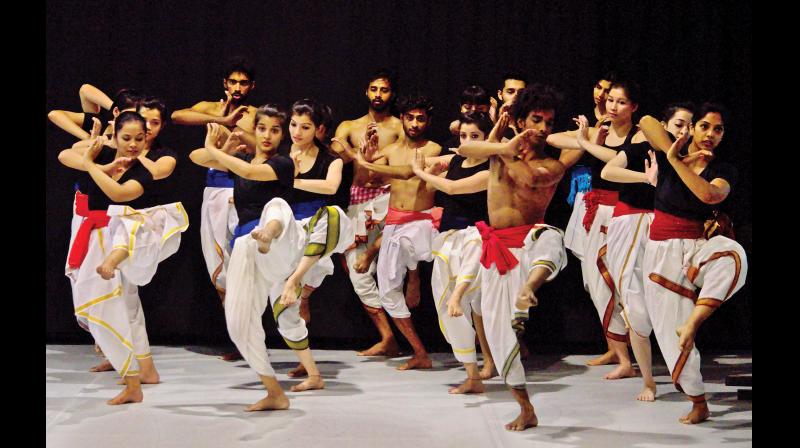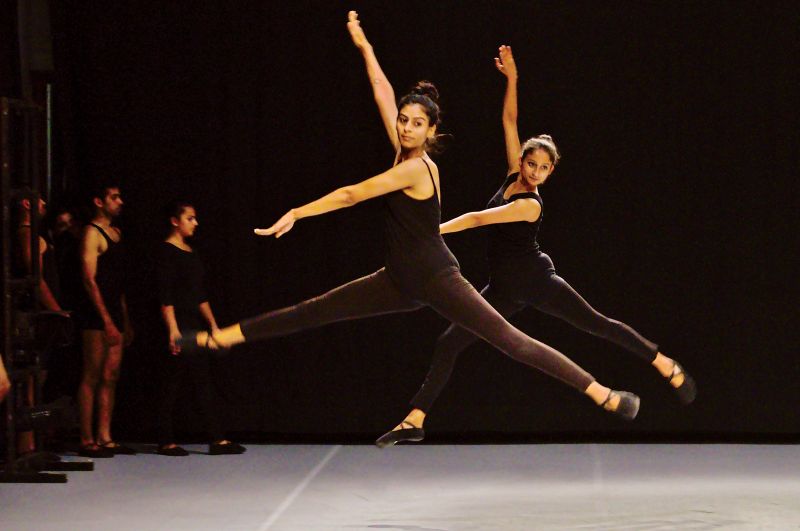Bharatnatyam to ballet with that twist, contemporary
The students are chosen based on auditions and Palazhy remarks that the emphasis is strictly on talent.

Arati, all of 20-years-old, slips off the stage and into a seat at Chowdaiah Memorial Hall, smiling and aglow after several hours of rigorous rehearsal. "This is my first experience with contemporary dance," she announces brightly, three days before Attakkalari's Diploma in Movement Arts and Mixed Media programme draws to a close. One of 17 scholarships students, Arati, who trained in Bharatnatyam back from Kerala, comes from an agrarian family - her father, a farmer, also makes ends meet as a coolie. "My parents have always been supportive of me," she says emphatically.
Her year away from home has done her wonders - "I was very shy when I first came here, also because I couldn't speak in English," she says, although she converses fluently in the language now. "All I knew was Bharatnatyam. I had always wanted to study martial art forms like Kalaripayattu and Silambam, but I'd never had the chance until now. I think I want to stay and train here for another year."
The Mixed Media programme, explains Attakkalari founder Jayachandran Palazhy focuses on vocational training, teaching students choreography, lighting techniques and pedagogy. "We're trying to inculcate in-depth training that will allow them to study further as well." Which has resulted in a wide variety of students - a doctor out to understand the effects of dance and dance-related injuries on the body, a young woman working to overcome a disorder in her hip - "Dance engages all parts of the brain, from coordination to spatial awareness to picking up on musical cues. Whether you want to be a dancer or not, there's a lot to learn."
The students are chosen based on auditions and Palazhy remarks that the emphasis is strictly on talent. "When we think of dance or music, we tend to look at people who been trained. However, that requires access, which requires resources. There are a lot of people who are very keen but have never had the chance. It all depends on your aptitude and your desire to dance."
About 40 students will graduate on August 14, performing 10 pieces put together by choreographers from around the world. These include classical dance forms like Bharatnatyam and ballet, contemporary pieces and folk and martial arts traditions like Kalari and Chhau.
"The idea is to bring classical and contemporary forms together," said Palazhy. "That way, classical exponents have access to contemporary traditions and vice versa. A student can make tremendous progress after a year of learning Bharatnatyam, also because of the structured way in which it is taught. That's something we want to bring to contemporary dance as well."
Interestingly, a large number of boys sign up for the course as well, which Palazhy says is a big leap from his own days as a student. "Back then, boys never learned how to dance. It was a very clandestine thing for me, saving up my pocket money and attending a dance class where I was the only boy. Those inhibitions have faded now." Maite larrañeta, artist in residence from Spain, explores the dimen ions of touch in Contact, turning existing stereotypes on their heads as girls lift and toss the boys around (with commendable ease).
The performance includes five contemporary dance pieces, three Bharatnatyam, one Kalari and one Chhau piece.
 Infographic
Infographic
Guru Sapan Kumar Acharya makes his presence felt when he sits down before a tabla, providing his dancers with effortless percussion. The dhoti-clad boys make their entrance on stage, putting up a spectacular show of might, punctuated with running back flips and cartwheels, part of the Puruliya tradition. "Weapons like bows and arrows and swords are often used during the performance." The tradition, which has been carried down orally for 800 years draws from everyday life and from nature. The girlscelebrate the grammar of Chhau in a piece he titles Sagar, performed in the Seraikalla tradition. Acharya is a fifth generation exponent of Chhau.
Getting 40 dancers to work in tandem is a challenge," said Iarraneta, a choreographer from Madrid who specialises in the Contact and Release technique. "They're two contemporary forms - Release is based on image work.” This involves the study of anatomy, so dancers can understand the different kinds of movements - "Do they originate in the skin, the muscle or the bone," explains larrañeta. "Imagination plays an important role as well, the movement is like a meditation, almost." Contact deals with movement based on touch - "it's about getting close to another person and sharing your weight, so you can lift someone ostensibly much larger than you.”
What: Graduation Day 2017
When: August 14, 7 pm
Where: Chowdaiah Memorial Hall

